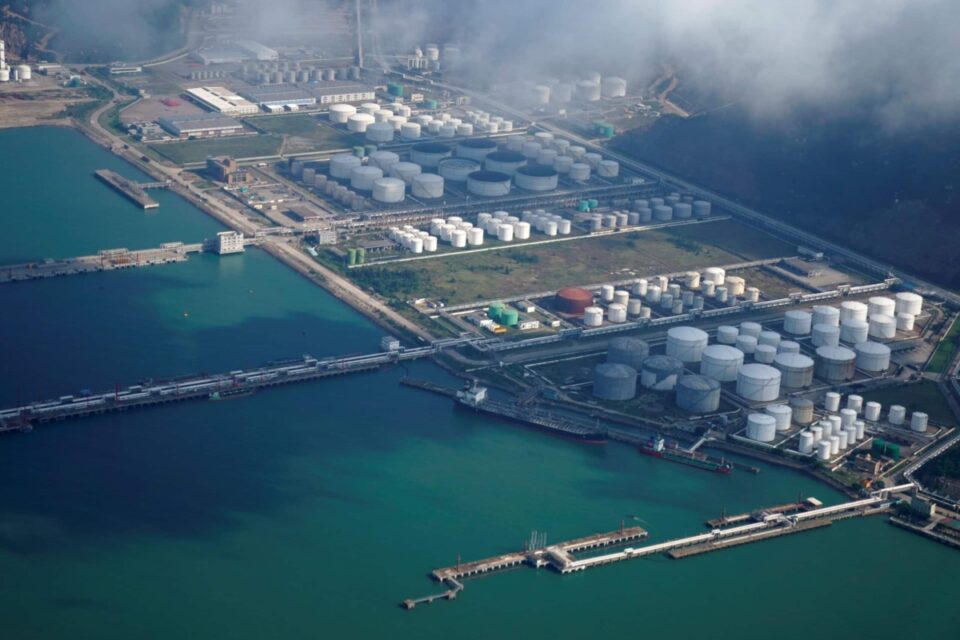BEIJING, Nov 23 — China’s oil demand growth is likely to ease in the first half of 2024 to around 4 per cent, according to consultancies, with resurgent consumption from the aviation and petrochemical sectors offset by weaker diesel usage due to an ongoing property sector crunch.
Slowing demand growth for the world’s biggest oil importer comes amid what remains an uncertain outlook for the Chinese economy and as travel patterns normalise following the post-Covid -19 rebound earlier in the year.
The Organisation of Petroleum Exporting Countries foresees Chinese demand averaging 16.41 million barrels per day (bpd) in the first half of 2024, up 3.2 per cent on 2023 levels, while the International Energy Agency (IEA) forecasts demand averaging 17.1 million bpd for the full year, to show 3.9 per cent growth.
Even though China’s economy has made a faltering recovery this year, oil consumption was still on course to set record highs, having been subdued between 2020-2022 by strict Covid-19 curbs.
Opec and the IEA expect China’s oil demand to show growth in 2023 of 7.6 per cent and 12.1 per cent, respectively.
Opec has dismissed fears of that demand growth for oil in China is fading, describing negative sentiment as “overblown” in a recent report. Opec forecasts show China accounting for 24.6 per cent of global oil demand growth in the first half of 2024, according to Reuters calculations.
The Opec + group, which includes allies such as Russia, on Wednesday unexpectedly delayed an upcoming ministerial meeting expected to discuss output cuts as producers struggled to agree on production levels, sources said.
Consultancies Wood Mackenzie, Rystad Energy and Energy Aspects respectively forecast China’s first-half 2024 oil demand to grow by 3.7 per cent, 4.0 per cent and 4.4 per cent versus the same period in 2023.
Their growth forecasts for the first six months range from about 578,000 bpd to 700,000 bpd to total between 16.2 million and 16.82 million bpd.
China does not provide official data on oil consumption or inventory levels, and the private growth forecasts use different bases of comparison.
The forecasts put expected growth next year marginally below pre-pandemic rates, when China’s oil demand grew at an average of 4.5 per cent between 2016 and 2019, according to Reuters calculations using IEA data for full year growth.
Buoyant naphtha, jet fuel demand
Naphtha, a petrochemical feedstock, is expected to be a key driver of oil demand growth, along with kerosene, which will be fuelled by recovery in post-COVID international air travel.
Rystad recently raised its forecast for China’s first-half naphtha demand growth to 11 per cent due to strong petrochemicals appetite, despite relatively weak margins as refiners keep plants operating to protect market share and cover costs, said its Beijing-based analyst Lin Ye.
While China’s domestic air travel has recovered to pre-pandemic levels, international traffic remains depressed at 53 per cent of pre-COVID levels, LSEG data shows, leaving room for expanding jet fuel demand, with Rystad forecasting 28 per cent growth in the first half of 2024 over the first half of this year.
Construction woes continue
However, broader economic pressures are likely to weigh on diesel and gasoline, with Woodmac forecasting a 1 per cent drop in first-half gasoline consumption to 2.5 million bpd as electric vehicle penetration increases and the post-Covid travel boom eases.
Despite spikes over holiday periods, China’s highway traffic has remained below pre-pandemic levels for much of the year, National Bureau of Statistics (NBS) data shows.
“The main downside risk to oil demand could come from diesel demand during the off-season in Q1 2024,” said Shiqing Xia, an oil and chemicals consultant at Woodmac, who forecasts diesel consumption to drop by 2 per cent annually in the first quarter before recovering.
Energy Aspects expects first-half diesel demand to be flat from a year earlier.
China’s builders, who consume vast quantities of diesel to power construction equipment, have been using less, with new construction in September down 15.2 per cent on last year, according to NBS data.
The manufacturing sector, another big diesel user, has also struggled in the face of weak export demand and fallout from the property slowdown.
—Reuters





